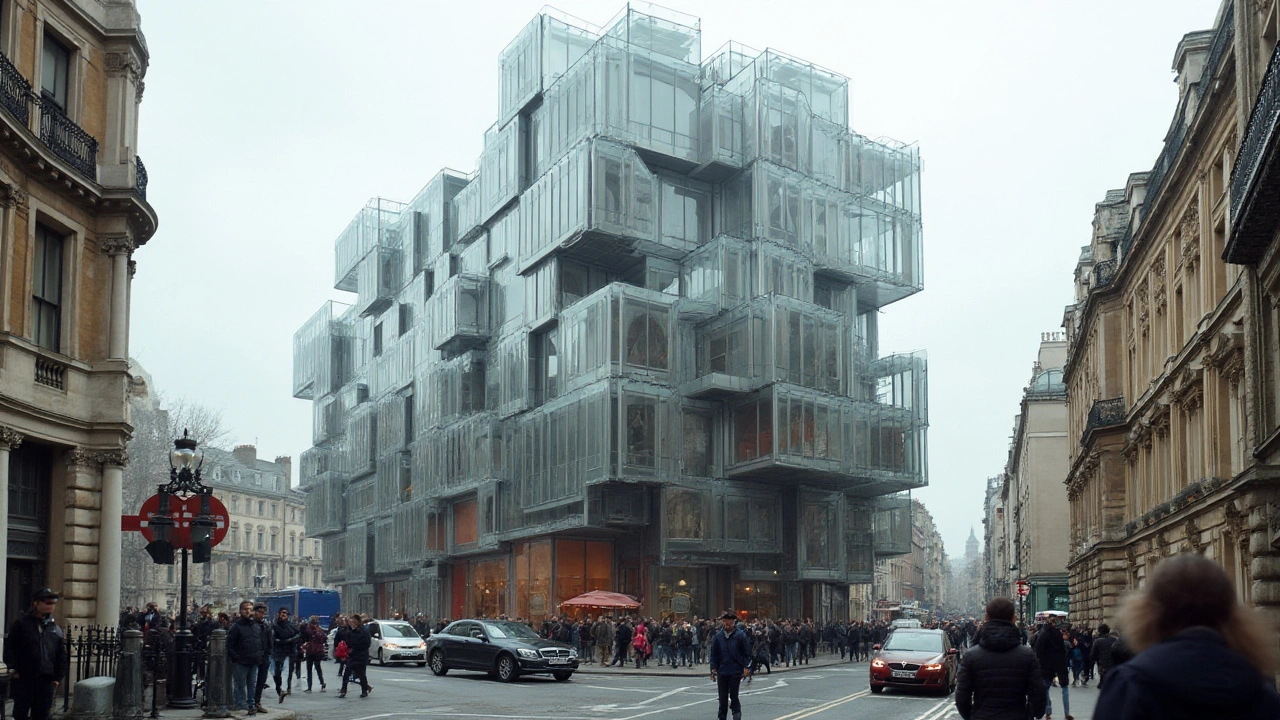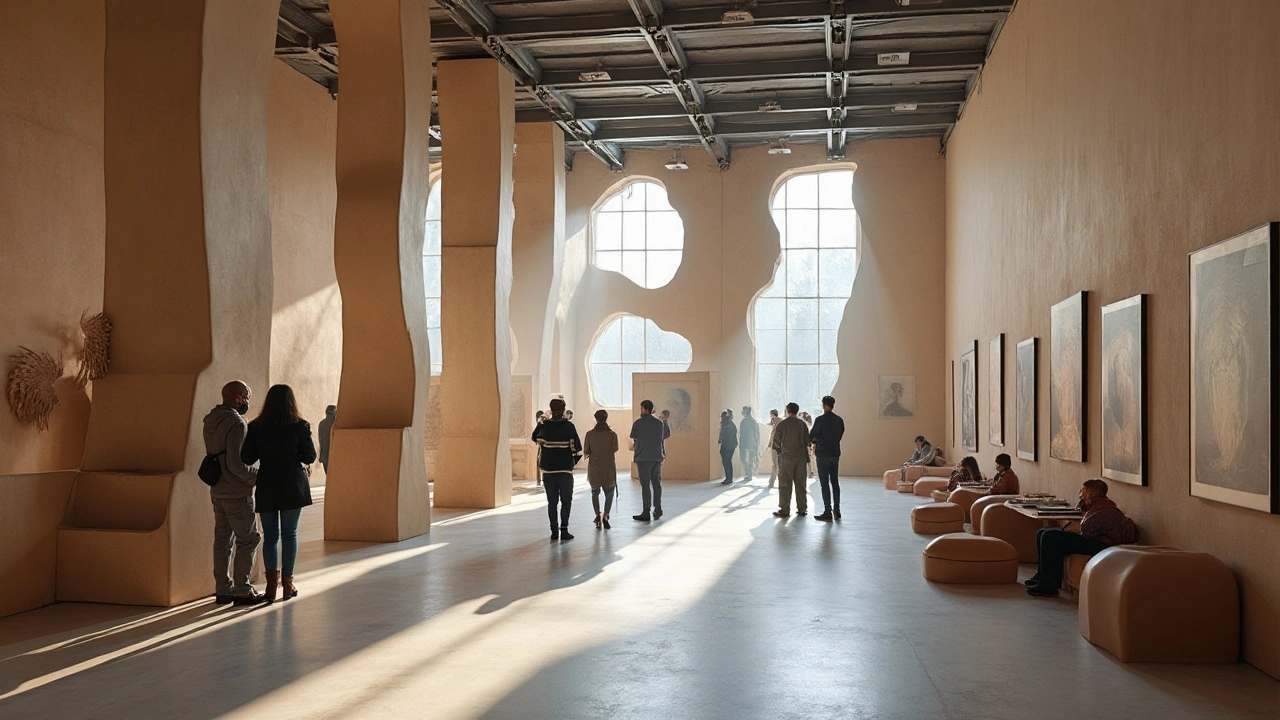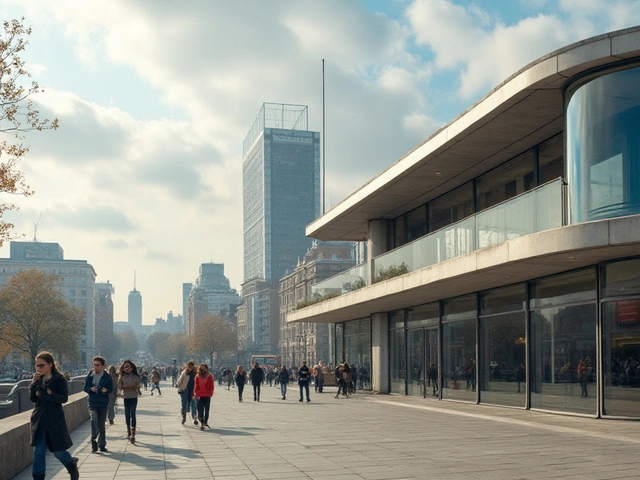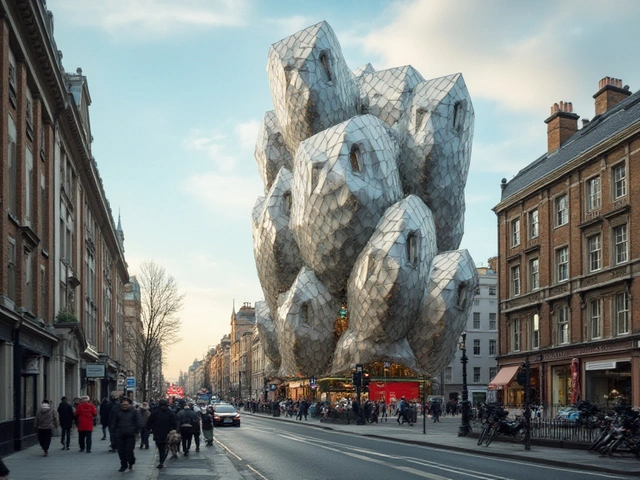In the ever-evolving world of architecture, deconstructivism stands as a rebellious force breaking free from traditional norms. It's more than just a style; it's an approach that invites a transformational view of design, prioritizing asymmetry and chaos over order and predictability.
This movement takes inspiration from literary deconstruction, aiming to create structures that seem to question their own existence. When exploring deconstructivism, it's impossible not to mention the mesmerizing works of architects like Frank Gehry and Zaha Hadid, whose creations seem to defy gravity and logic.
For those fascinated by how far the imagination can stretch within the confines of architectural discipline, deconstructivism serves as a poignant reminder of the art of possibility. As each building narrates its unique story, one begins to appreciate the fine line between madness and genius that this approach to design embodies.
- The Roots of Deconstructivism
- Key Figures in Deconstructivism
- Principles of Deconstructivist Design
- Impact on Modern Architecture
The Roots of Deconstructivism
The intriguing journey into the world of deconstructivism begins in the latter half of the 20th century, when the rigid architectural norms were ripe for disruption. Emerging initially as a response to the conformity championed by modernism, deconstructivism draws inspiration from both philosophical and artistic schools of thought. Its underpinnings can be traced back to the French philosopher Jacques Derrida, who introduced the concept of deconstruction in literary criticism. He challenged the idea that texts have a single, central meaning, advocating instead for the exploration of contradictions within any narrative. Just as writers deconstructed texts, architects began to deconstruct forms.
The architectural manifestation of this philosophy was first prominently showcased in 1988 at the Museum of Modern Art in New York, in an exhibition aptly titled “Deconstructivist Architecture.” Curated by Philip Johnson and Mark Wigley, the event catapulted the works of key architects like Frank Gehry, Zaha Hadid, and Peter Eisenman into the public eye, marking a pivotal moment for the movement. These architects experimented with abstract forms, complex geometries, and unconventional structures, celebrating disorder and unpredictability to craft narratives both stark and captivating.
This exhibition not only threw new light on architectural possibility but also brought into question the essence of buildings and spaces. The conversation shifted from how well a building serves its practical purpose to how it interacts with its surroundings and evokes an array of emotions. A quote from Philip Johnson during the exhibit succinctly captures this duality:
"Deconstructivism is not disordered, nor does it have any relationship to the chaos it seeks to represent. Instead, it is the absence of order."
Influenced by movements such as Russian Constructivism and contemporary art forms, deconstructivism challenges the perspectives of spatial relation and the constraints of design. Architects were no longer bound to a set of predictable forms and materials. This liberation allowed for a new kind of structure that seemingly floated or twisted in space, unraveling the tightly knit relationship between form and function famously advocated by modernists like Le Corbusier. The movement employed advanced construction techniques and materials, often embracing new technology to bend the visual and physical limits of structures.
This period saw architects embracing computer-aided design (CAD) allowing them to experiment with complex geometries that would have been cumbersome, if not impossible, to accomplish before. This technological evolution was crucial in bringing the audacious concepts of deconstructivism from the drawing board into reality. Thus, the roots of deconstructivism are not merely buried in the ideas of rebellion against order, but in the advanced methodologies and imaginative scope that charted a course for the extraordinary architectural landscapes we witness today.

Key Figures in Deconstructivism
In deconstructivism, architects have redefined what structures can be, often surprising both traditionalists and those seeking new visions. Among these creative pioneers, Frank Gehry is a name that frequently resonates. With designs that turn common structures into sculptural forms, Gehry's works, such as the Guggenheim Museum in Bilbao and the Walt Disney Concert Hall in Los Angeles, have made the world rethink the limits of architecture. His buildings seem to capture motion frozen in time, a feature that disrupts the expected conventions of design.
Another formidable name in this discipline is the late Zaha Hadid, who was often dubbed the "Queen of the Curve" for her futuristic designs. Her works, including the London Aquatics Centre and MAXXI Museum in Rome, showcase a breathtaking combination of fluidity and strength. Hadid didn't just build; she crafted dreams into tangible structures that played with geometry and light like an artist with a canvas. "There are 360 degrees, so why stick to one?" Hadid once questioned, challenging the orthodoxy of right angles and straight lines.
Daniel Libeskind is also a major contributor to this movement, creating designs that often integrate historical context and layered narratives. His Jewish Museum in Berlin is renowned not only for its striking, zigzag layout that envelopes visitors in an emotional architectural journey but also for its ability to evoke deeper connections with its historical implications. Libeskind's approach to deconstructivism focuses on storytelling through space, acknowledging the capacity of architecture to be a vessel of cultural memory.
Peter Eisenman, known for his theoretical contributions as well as his built projects, brought a distinct cerebral angle to deconstructivism. His design of the Memorial to the Murdered Jews of Europe in Berlin asks visitors to reflect deeply on history, achieved through an unsettling grid of stelae that challenges perceptions of space and time. Eisenman’s work continues to stimulate intellectual debates about the purposeful manipulation of form and meaning.
These architects, among others, embody the heart of deconstructivism—they challenge the conventional and dare us to look beyond the surface. Whether it's the playful narratives of Gehry, Hadid's avant-garde elegance, Libeskind’s poignant monumentality, or Eisenman’s thoughtful provocations, their contributions represent not only a shift from the known but also a deliberate embrace of chaos, unpredictability, and complexity in design. These qualities ensure that their works remain timeless provocateurs in the architecture world.
"Architecture should speak of its time and place, but yearn for timelessness." - Frank Gehry

Principles of Deconstructivist Design
Deconstructivist design is characterized by a deliberate departure from traditional architectural concepts. Embracing chaos and complexity, it challenges the notions of harmony and unity that many classical styles hold dear. One of the core principles is fragmentation, where structures appear to be broken into pieces, often producing a dynamic interplay of shapes and forms. This design form often conspicuously lacks symmetry and orderly arrangements, which are traditionally perceived as architectural virtues.
Deconstructivism also defies the conventional use of materials. Architects often experiment with a variety of textures and surfaces, disrupting the way materials are typically applied. Through this exploration, they reveal textures and structural elements that would usually be concealed, fostering a sense of transparency and fluidity in the design. Renowned architect Frank Gehry, known for his unconventional methods, once stated,
"The idea is to break down the traditional form and create something completely new and unexpected."This captures one of the defining features of deconstructivism: its unpredictability.
Another hallmark of deconstructivist design is its treatment of space; interiors often ignore conventional layouts, opting instead for irregular shapes that challenge the user's perception. Spaces might evoke a feeling of disorientation, but they prompt observers to rethink their engagement with the environment. This can be seen in the works of Zaha Hadid, who integrated fluid forms and futuristic aesthetics, giving her buildings a sense of movement and change.
In the deconstructivist paradigm, the whole concept of form follows function is often turned on its head, with aesthetic form becoming an end in itself. By employing cutting-edge technology and digital tools, architects can create complex geometries and innovative structures that redefine urban landscapes. Embracing the imperfection and unpredictability of deconstructivism allows the architects to break free from tradition, making room for personal expression and conceptual experimentation. This movement continues to inspire debate and discussion, ensuring its place at the forefront of architectural innovation.

Impact on Modern Architecture
Modern architecture has been dramatically reshaped by the wave of deconstructivism, introducing a palette of possibilities that was previously unimaginable. With its roots lodged firmly in the late 20th century, this movement tore down the convention of homogenous design, ushering architects into an era where chaos could be seen as beauty. This approach has blurred the lines between function and art, pushing boundaries by transforming the skyline with buildings that seem to challenge physical laws. These structures exhibit a visual tension, a sort of peculiar dynamic imbalance that turns heads and stirs conversations.
Consider the Guggenheim Museum Bilbao, an emblem of deconstructivist impact designed by Frank Gehry. This building, with its shimmering facade and curving forms, almost defies architectural norms and has become a global symbol of innovative architecture. The museum not only revitalized the city of Bilbao economically but also stands as a testament to how deconstructivism can redefine a city's identity. Such striking designs elevate architecture from mere construction to a category of public art, fostering cultural engagement and tourism.
One must also acknowledge the influence of Zaha Hadid, known for her dynamic and visionary designs that echo deconstructivist principles. With projects like the Heydar Aliyev Center in Azerbaijan, Hadid offered an undisputed proof of how deconstructivism encourages an enigmatic dialogue between a building and its surroundings. Her work challenges the expected linearity found in modern design, encouraging a fluid interaction within urban landscapes. As she once mentioned, "Architecture is really about well-being. I think that people want to feel good in a space... On the one hand, it’s about shelter, but it’s also about pleasure."
The impact of deconstructivism on modern architecture is also reflected in its influence on educational institutions and public discourse. Many architectural schools now incorporate this movement as a critical part of their curriculum, teaching students to think beyond traditional structures and embrace creativity. By instilling a mindset that bows to innovation rather than regulations, graduates are better equipped to tackle modern architectural challenges. There's an evident shift in industry practices too, as more firms consciously attempt to imbue their projects with individuality and uniqueness by adopting such radical, albeit sometimes controversial, ideas.
Moreover, the construction industry itself has adapted to accommodate these extraordinary designs. Advances in technology and materials have made it feasible to bring such complex architectural visions to life. Contractors have honed specific skills in manipulating new materials to execute these sophisticated structures without compromising stability. With parameters like sustainability and energy efficiency becoming increasingly crucial, there is a significant emphasis on ensuring that deconstructivist buildings meet modern environmental standards. There’s no denying that embracing deconstructivism heralds a promising avenue for sustainable design solutions in today’s eco-conscious society.





